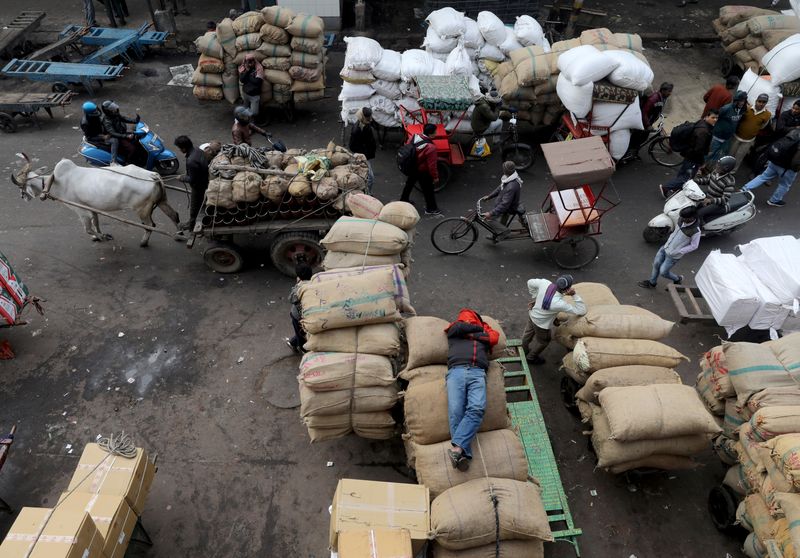By Manoj Kumar and Aftab Ahmed
NEW DELHI (Reuters) -India grew at the fastest pace of any major economy in the July-September quarter but economists said disruptions from the emerging Omicron https://www.reuters.com/world/spread-omicron-variant-forces-nations-rethink-plans-global-travel-2021-11-29 coronavirus variant risked slowing the recovery, especially given India's low vaccination rates.
Asia's third-largest economy has rebounded strongly from last year's deep pandemic-induced slump, boosted by vaccinations and stronger government spending, economists said. But new COVID-19 variants, a global slowdown and rising manufacturing prices all pose risks to growth.
Gross domestic product expanded 8.4% in the September quarter from a year earlier, statistics ministry data showed on Tuesday, in line with 8.4% growth predicted in a Reuters poll and compared with a 20.1% expansion in the previous quarter.
"Data clearly shows that corporate income and profit are above the pre-pandemic level," K.V. Subramanian, chief economist at the finance ministry told reporters after the data release.
He said double-digit growth was expected in the current fiscal year, which ends in April 2022, with growth of 6.5% to 7% predicted for the following fiscal year.
The International Monetary Fund has forecast 2021 economic growth of 9.5% in India compared to a forecast for China of 8%.
The Reserve Bank of India's (RBI) monetary policy committee meets on Dec. 6-8. With households increasingly worried about inflation, policymakers are expected to speed up measures to suck up excess liquidity before normalising interest rates.
"With growth revival and sticky core inflation, we expect RBI to undertake phased withdrawal of liquidity and start raising the policy rates soon," said Sujan Hajra, chief economist at Anand Rathi Securities, Mumbai.
Consumer spending - the main driver of the economy - rose 8.6% from a year earlier in July-September following 19.3% growth in previous quarter, Tuesday's data showed.
Manufacturing expanded 5.5% and farm output rose 4.5% during the three months to September, which bolstered the recovery as lower interest rates lifted consumer spending and investments.
Investments rose 11% compared with growth of 55.3% in the previous quarter, while state spending jumped 8.7% after contracting nearly 5% in the April-June period.
RISKS TO GROWTH
Modi has rolled back three farm laws aimed at cutting subsidies and attracting investments while putting planned labour reforms on hold as his party faces growing criticism over rising distress among workers during the pandemic.
Rising prices and falling rural wages risk denting consumer demand, analysts say. Real rural wages have contracted 3% so far in the current fiscal year, according to estimates, leading to declines in two-wheeler and tractor sales.
Supply bottlenecks including chip shortages have also hit production of vehicles and other electronic goods.
The emergence of the Omicron coronavirus variant has led health authorities to tighten testing at Indian airports while Prime Minister Narendra Modi has ordered a review of plans to ease travel curbs.

Private economists said the new COVID-19 variant could dampen hopes of recovery in tourism and other services, as only around 32% of the population has been fully vaccinated.
"We need to watch out for any risks from the Omicron COVID variant and any escalation in supply disruptions due to stricter lockdowns across the globe," said Sakshi Gupta, senior economist at HDFC Bank.